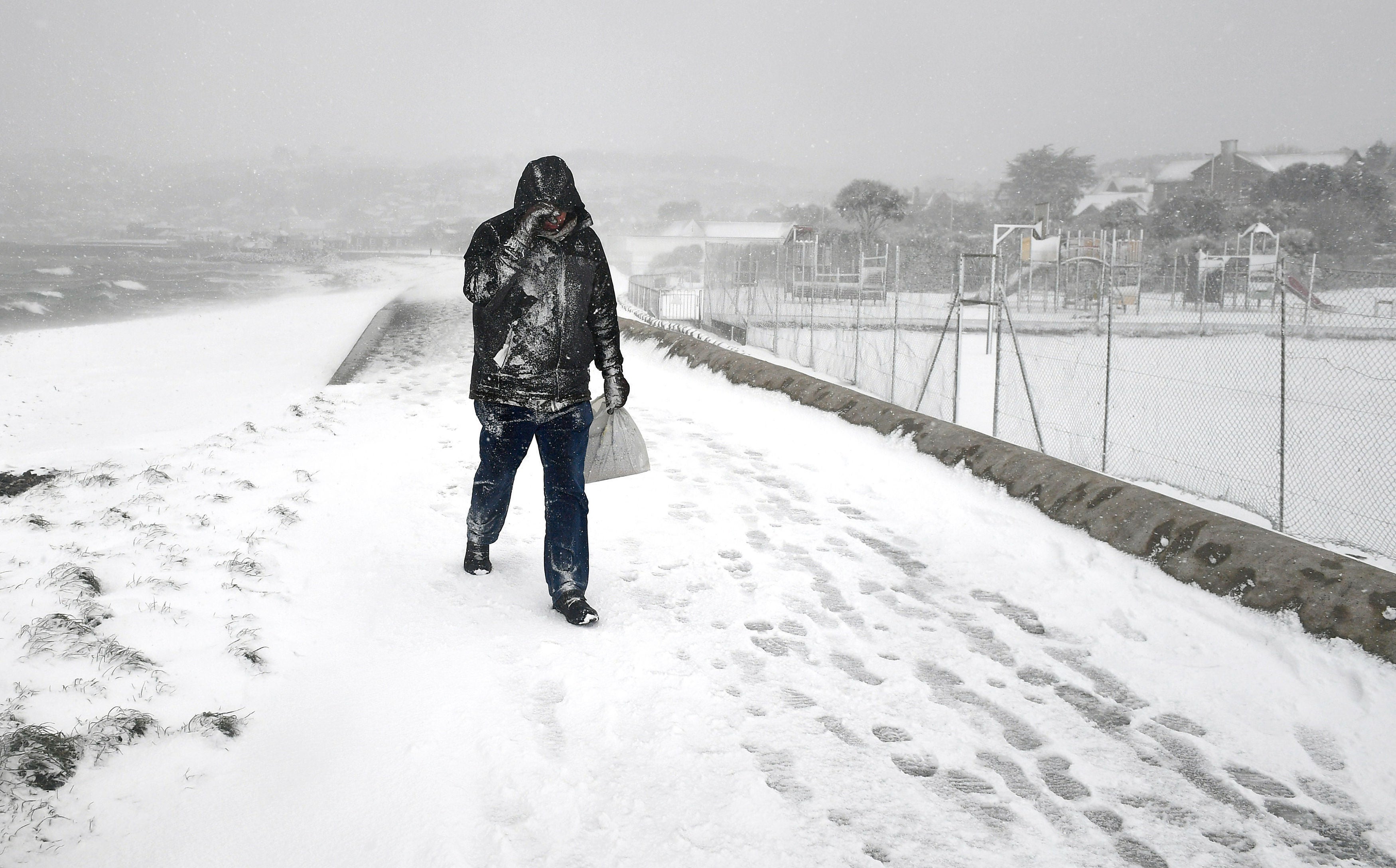What is sudden stratospheric warming? Inside the weather event hitting the UK
SSW Phenomenon led to 2018 cold snap the Beast from the East, which led to heavy snow in the UK
Your support helps us to tell the story
From reproductive rights to climate change to Big Tech, The Independent is on the ground when the story is developing. Whether it's investigating the financials of Elon Musk's pro-Trump PAC or producing our latest documentary, 'The A Word', which shines a light on the American women fighting for reproductive rights, we know how important it is to parse out the facts from the messaging.
At such a critical moment in US history, we need reporters on the ground. Your donation allows us to keep sending journalists to speak to both sides of the story.
The Independent is trusted by Americans across the entire political spectrum. And unlike many other quality news outlets, we choose not to lock Americans out of our reporting and analysis with paywalls. We believe quality journalism should be available to everyone, paid for by those who can afford it.
Your support makes all the difference.The UK’s weather is temperamental at the best of times, but there is a specific weather phenomenon that can lead to dramatic changes and extreme cold events.
A Sudden Stratospheric Warming (SSW) was to blame for the notorious “Beast from the East” in March 2018, when a bitter winter storm hit the British Isles, bringing heavy snow, ice and strong winds. The storm led to 17 deaths and brought much of the country to a standstill.
But what is an SSW, and how often do they actually happen?
Here is everything we know about what causes the weather phenomenon.
What is sudden stratospheric warming?
As the Met Office explains, a weakening of the rapid westerly winds roaring above the Arctic, known collectively as the Polar Night Jet, occurs when natural weather patterns or disturbances lower down in the atmosphere disrupt their flow and cause the jet to “break just like waves on the beach”.
When that happens, “cold air then descends very rapidly in the polar vortex and this causes the temperature in the stratosphere to rise very rapidly, as much as 50C over only a few days”.
This process is what is known as sudden stratospheric warming, which typically takes place “between 10km and 50km above the Earth’s surface”, meaning we do not notice the warming effect on the ground.

How does it affect the weather?
The stratospheric sudden warming can sometimes cause the jet stream to ‘snake’ more, and this tends to create a large area of blocking high pressure, the Met Office said.
Typically this will form over the North Atlantic and Scandinavia, which means that northern Europe and the UK is likely to get a long spell of dry, cold weather.
Southern Europe, by contrast, will tend to see mild, wet and windy weather when an SSW occurs.
Cold easterly winds can develop on the fringes of these areas, potentially leading to a plunge in temperatures and snow, as was the case with the 2018 Beast from the East.
How rare is the phenomenon?
The Met Office stressed that the stratospheric sudden warming doesn’t happen every year, and it does not always affect our weather when it does.
It is even more rare for three SSW events to occur in one year, which has happened this winter between November 2023 and March 2024.

Professor Adam Scaife, head of long-range forecasting at the Met Office, said three SSWs in the same period is a once-in-a-250-year event.
He said: “Although we have not seen it before, we recently documented the chances of an unprecedented three SSW events happening in one winter.
“Our research work, using multiple computer simulations, showed that this could occur about once in every 250 winters.
“Although this is very rare, we also found that the chance of multiple SSW events is increased... and so the chance of multiple events this winter is raised.”

Can we track when it will happen?
Currently, the SSWs can be predicted reliably around a week in advance, the Met Office said.
There is also an interval of several weeks between the sudden stratospheric warming taking place and its beginning to impact our weather.
Although the event does not always lead temperatures to plummet, 70 per cent of SSW occurrences are linked to a cold snap.

Join our commenting forum
Join thought-provoking conversations, follow other Independent readers and see their replies
Comments